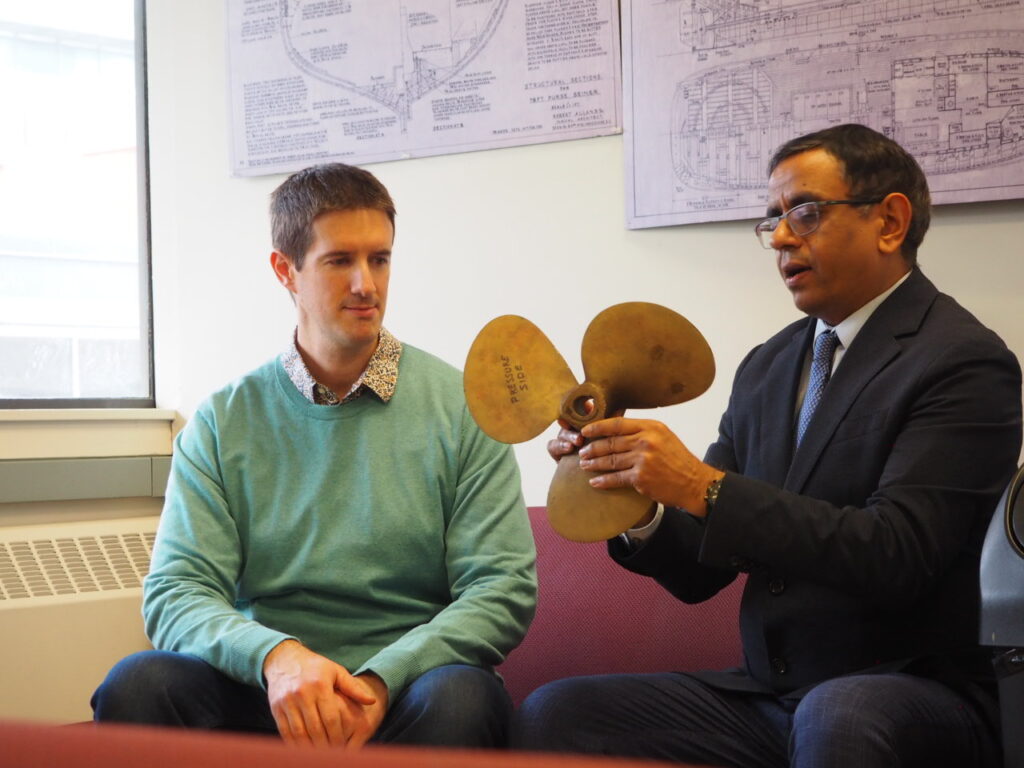Chronic ship noise can lead to stress, hearing loss and feeding problems for marine mammals like whales, dolphins and porpoises. UBC researchers are diving in to help address the issue.
According to project lead Dr. Rajeev Jaiman, an associate professor in the department of mechanical engineering, propeller noise accounts for much of the acoustic barrage from ships.
"Propeller noise can hit 170 decibels, the equivalent of a jet engine or a rocket lift-off," said Dr. Jaiman.
Popping and singing
The reason for the noise is bubbles. The ship's movement and its propeller's rotation create steam bubbles that then implode. This creates popping effects and a high-pitched "singing" that can irritate crew and passengers onboard and disrupt marine life within a 100-kilometre radius.
To reduce noise, the researchers are studying solutions like injecting a jet of fluid to help control propeller movement or introducing wavy and serrated edges to break up flow patterns that cause noise.

Researchers Jasmin Jelovica and Rajeev Jaiman are studying solutions like adding wavy and serrated edges to propellers to break up flow patterns that cause noise. Photo: Devan Power/UBC Faculty of Applied Science
Dr. Jaiman and his colleagues are also developing an artificial intelligence (AI)-based framework to rapidly analyze the fluid interactions and dynamics behind the noise. They're hoping to eventually provide marine engineers with a new suite of tools to design and manufacture quieter propellers.
Smart, lightweight structures
The team also aims to improve other ship parts and systems through better structural components and materials that have the ability to dampen noise.
Project co-lead Dr. Jasmin Jelovica, a naval architect and assistant professor of mechanical and civil engineering in the faculty of applied science, noted that innovative material layouts could reduce the weight of structural components by up to 50 per cent. "Advanced structures could be better noise barriers. They can be stronger and have other benefits as well."
He added that a few ship manufacturers have started using sandwich panels made of metals and composites in the hulls of their ships. However, structural change can potentially affect safety and other aspects, so this type of change needs to happen slowly.
"The good news for us, as researchers, is that the marine industry is receptive to these innovations. They recognize the need to change and to become more sustainable and environmentally friendly," said Dr. Jelovica.
The researchers are working closely with industry partners such as Seaspan Shipyards, Robert Allan Limited and Vard Marine in this five-year project, with funding support from Natural Sciences and Engineering Research Council of Canada (NSERC).
AI to help build greener ships
AI and machine learning are a big part of the team's work, enabling them to perform analysis and simulations in a fraction of the normal time.
"Modelling a ship using traditional computational methods takes time. Modelling even a tiny proposed structural change can take weeks. With AI, that work can be done in a matter of seconds," said Dr. Jelovica.
The researchers recently received additional funding from Transport Canada's Quiet Vessel Initiative to build a machine learning-based noise-prediction toolkit that will allow ships to adjust their noise based on the location of nearby marine mammals, and new AI software tools that can predict underwater vessel noise early in the design stage.
"Efficient AI-based predictions together with novel flow control devices and structural modifications can help us to tackle ship noise pollution while reducing carbon emissions," said Dr. Jaiman.
Interview language(s): English (Jaiman, Jelovica), Punjabi/Hindi (Jaiman), Croatian (Jelovica)
Multimedia assets:
- Photo gallery (Dropbox)






